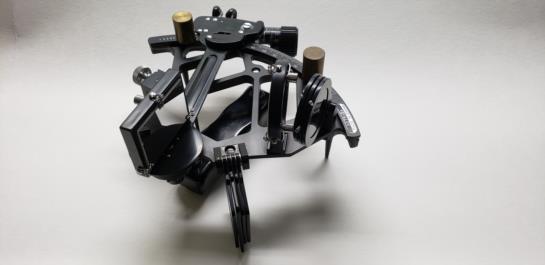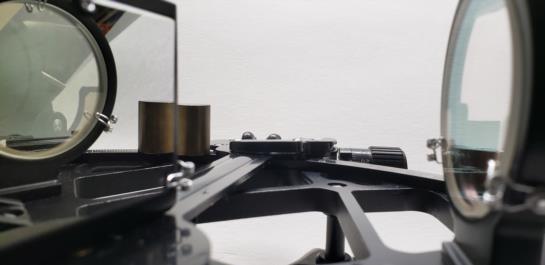
NavList:
A Community Devoted to the Preservation and Practice of Celestial Navigation and Other Methods of Traditional Wayfinding
From: Ed Popko
Date: 2019 May 16, 16:45 -0700
Spring is here and it's fun to be out doors again. This means tuning up my sextants for lunars and other things.
I notice that my C&P Horizon remained in tune but my Astra III B was bit out of wack.
Eliminating index errors begin by ensuring that the index mirror is absolutely perpendicular to the frame. You must eliminate this error first before going on to correct the horizon mirror.
I use two standard techniques for the index mirror, it's the second method I have a question about.
The first technique removes the scope and places two brass cylinders placed on the frame arc. I use a pair of Celestair brass cylinders designed for this purpose. Their height, when placed on the sextant arc frame, is about even with the center of the index mirror. The two attached images show the setup and the resulting direct/reflected images from the index mirror. It's clear from the image that the index mirror is not perpendicular to the sextant frame otherwise the reflection/direct images would line up and superimpose perfectly. I'm also viewing the cylinders at the level of their tops, I can not see the top of either cylinder. They appear as a line because my eye is on plane of the cylinder tops. (In his Advanced CelNav workshop, Frank shows a fun alternative to brass cylinders - use two caps from magic markers.)
The second technique, and the one published in just about every celestial navigation book, is to use the reflection of the frame itself. No cylinders, just the direct/reflected views of the frame. When the direct/reflected views of the edge of the arc are aligned, the index mirror is perpendicular to the frame. And here is where I start to go wrong.
If I simultaneously view both direct/reflected images of the frame, and center the dual images at the mid-edge of the index mirror, I tend to get side error when I check my results with stars. But it's the technique widely shown in navigation books. If, however, I line up the direct/reflected images and center them as close as I can to the bottom-edge of the index mirror (closest to the sextant frame), I seem to get it right.
Why is this? Paralax? Just luck? Explanation not clear?
BTW, I can live with a bit of side error. Sometimes it is helpful. But in this post, I want to know how to get rid of it.
Ed








